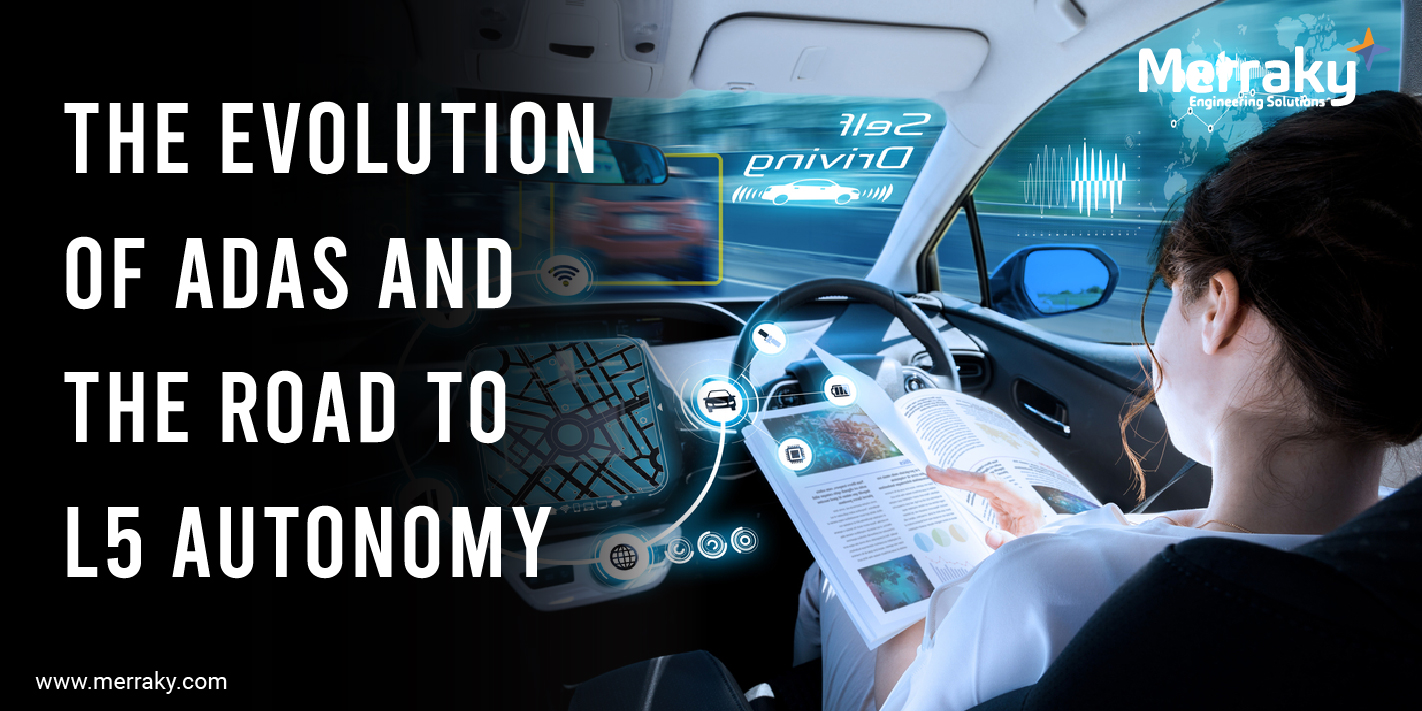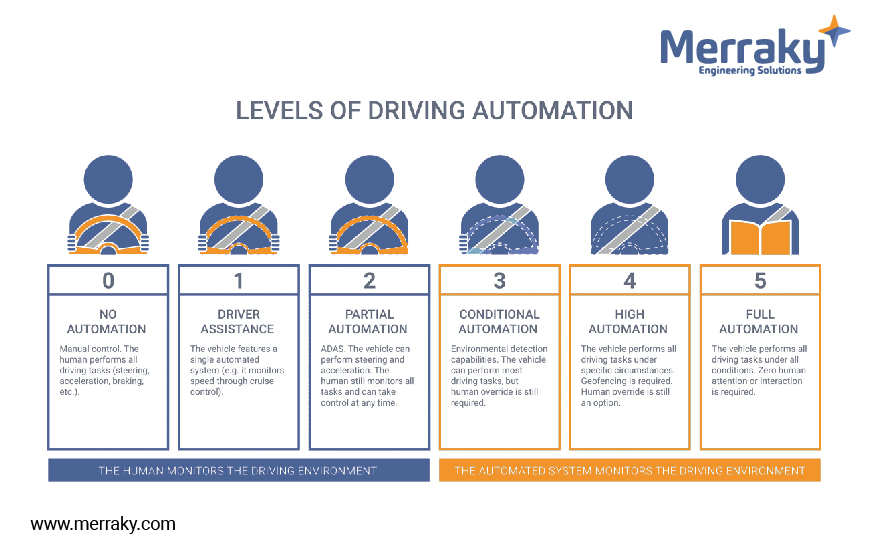
The Evolution of ADAS and the Road to L5 Autonomy
From Model T to Model S
Much like every other industry, the automotive segment also had humble beginnings. The birth of the industry can be traced back to the late 1890s with the advent of innovations such as the steering wheel and floor-mounted accelerator. In 1906, with the introduction of the Ford Model T, cars first began to shed their carriage look and started evolving towards the car-like appearance we are all familiar with today.
In this blog, we take a closer look at how the forces of automation have been moving the automotive industry in recent times.
Perhaps the first step in this direction was the use of cruise control to monitor driving speed. This was then closely followed by the cameras that were meant to provide a third eye and assist in functions like parking. However, with the proliferation of sensor technology, the disruption began to grow by leaps and bounds. A study by ABI Research forecasts that by 2025 we will see approximately 8 million autonomous or semi-autonomous vehicles on the road.
The Different Levels of Autonomy
Society of Automotive Engineers has defined six different levels (0 to 5) of automation. They begin with level 0, which is the common car with no self-driving ability at all. Level 1 comes with some driver assistance like adaptive cruise control. Level 2 cars capable of steering and acceleration functions but require the driver to be ready to take the wheel. Level 3 is the first stage of full autonomy but with human override capability. Level 5 has no human override capability.

Where do we stand?
While Tesla have claimed to achieve “Level 5” autonomy by the end of 2021, currently, the ADAS sector is at “Level 2.5” autonomy and gradually inching towards Level 3 (where the drivers become just another passenger). So, the idea of scrolling through feeds or taking a nap while getting from point A to B still eludes reality.
The bumpy road towards L5 Autonomy
The promise of fully autonomous vehicles to herald in a new era of transportation has drawn automotive OEMs’ attention in recent times. While some of the ambitious claims of L4 and L5 autonomy by automakers look good on paper, we are still a long way from achieving complete autonomy. This will require Government and automakers to work together on different fronts to accelerate the development of these vehicles.
Let us take a look at three critical challenges that OEMs will have to overcome to bring L5 autonomy to life.
1.Legal and Regulatory Rigmarole
One of the first challenges that automakers would face would be legal and regulatory. These compliance standards are likely to vary widely across geos. Also, the beta test of these autonomous vehicles will be expected to follow stringent rules that are still hazy in most countries. The issue of determining liability in the case of accidents involving the transition of vehicle control from driver to human is also going to be a lot like nailing Jell-O to a tree. The frameworks regarding data sharing in V2V and V2X communication are still largely under development.
2.Technology Thermodynamics
The second and most significant challenge is technological. Despite the advancement and proliferation of smart sensors, cases of sensor snags are not entirely uncommon. These snags are absolutely unacceptable especially when an AV is driving itself around. Moreover, since the outcomes of automation are driven by the mechanics of three systems (radar, lidar, and camera) working hand in hand, it further opens avenues for other vulnerabilities. Sensor fusion yet again is not fail-proof. Additional factors like the behavioral component of human pedestrians and the volatile nature of the driving environment must also be considered. Weather conditions like snow and fog are also likely to add to the woes.
3.Economic Entanglements
The third challenge has more of an economic dimension to it. Engineering ADAS that can be manufactured and deployed on a large scale with cost-effective, maintainable hardware is a complex process. Factors like insurance pricing and determining compensation when liability is uncertain are completely gray areas. Given the plethora of data that is generated, cybersecurity also would demand a sizeable investment.
If we are to get anywhere close to level 4 or level 5 autonomy anytime soon, it is quite clear that automotive OEMs must engage in partnerships and collaborative ecosystems to speed up their go-to-market. By engaging with technology firms, OEMs would be able to deliver the best of both worlds. The tech companies can employ agile operating models that allow experimentation, and the automakers can minimize risk due to rigid supply chains, product development practices, and tough sectoral norms.
Merraky is a global engineering services company providing best-in-class engineering design and consulting services in IoT engineering, embedded electronics, mechanical engineering, and manufacturing engineering. Headquartered @ Bangalore, India with global operations in UK, US, and Italy.


